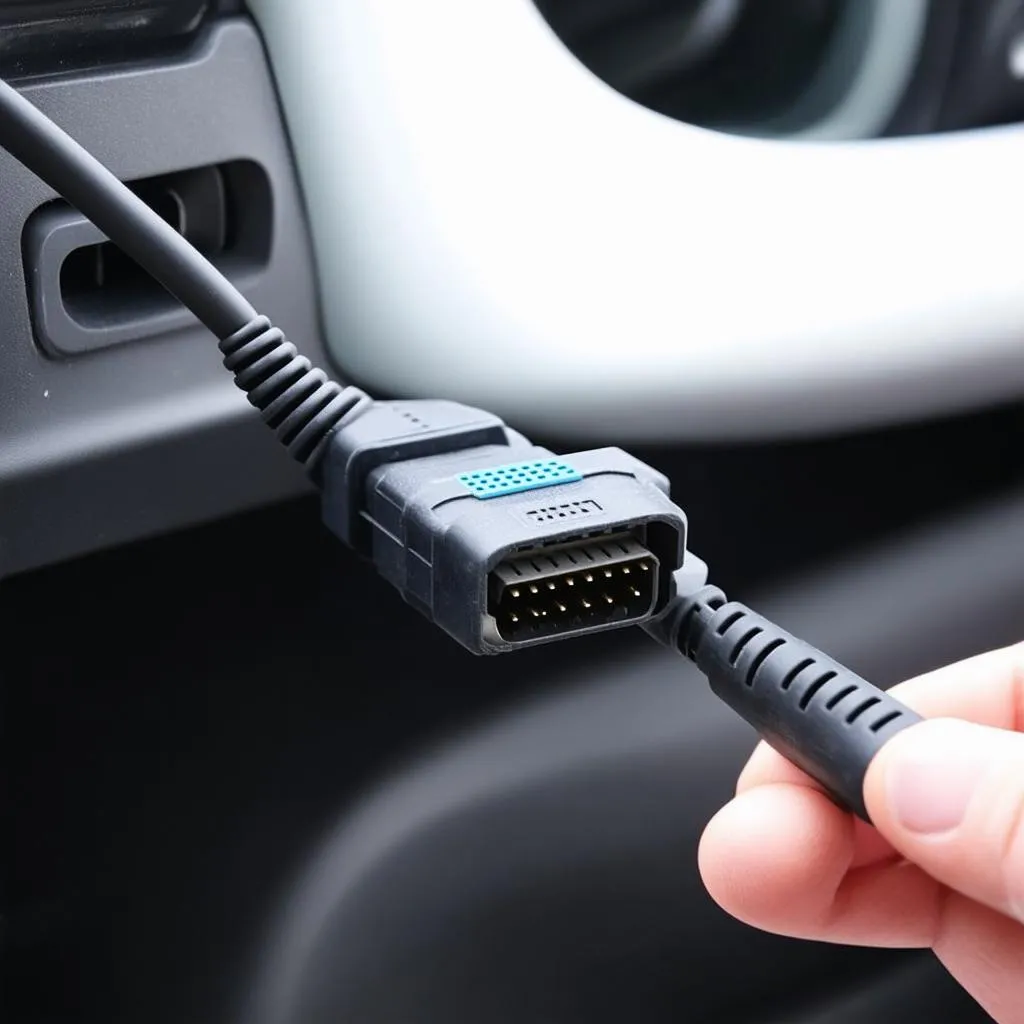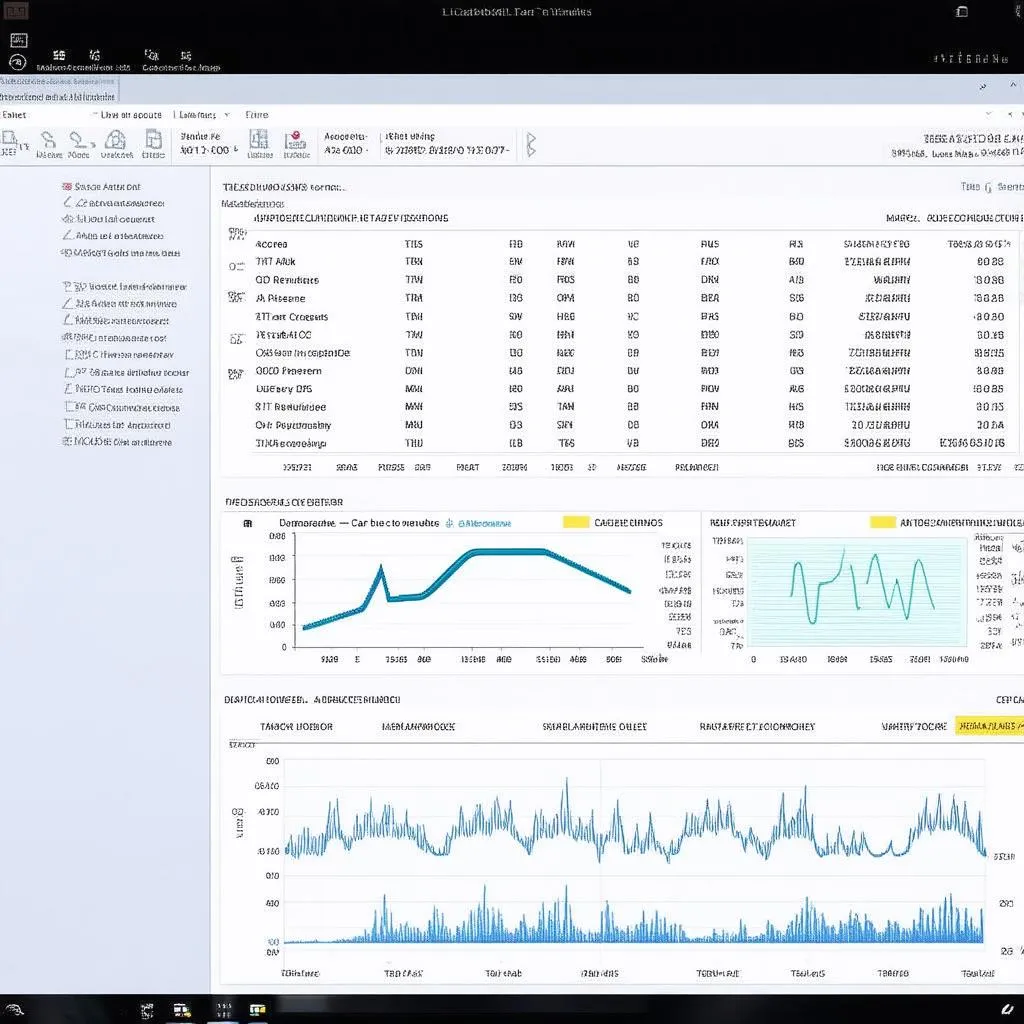Have you ever wondered what those mysterious ports under your dashboard are for? You know, the ones mechanics seem to plug into with a knowing smile? That, my friend, is the gateway to your car’s inner thoughts – the OBD port. And just like your smartphone, these diagnostic systems have had their own “upgrades” over the years. Today, we’re diving deep into the world of OBD I vs. OBD II, unraveling the mysteries and answering your burning questions.
Understanding the “Why” Behind OBD
Before we delve into the differences, let’s take a quick trip back to the early 1980s. Picture this: a world with far fewer computers on wheels. Back then, car problems were diagnosed primarily by ear and experience. However, the rise of electronic engine controls brought a new challenge – understanding what those computerized components were “thinking.”
Enter OBD, or On-Board Diagnostics. This system acts as a translator between your car’s computer and the outside world, allowing mechanics (and savvy car owners!) to tap into trouble codes, sensor readings, and other vital information. The goal? Faster, easier, and more accurate car repairs.
OBD I: The Pioneer
Think of OBD I as the first generation – functional, but with room for improvement. Introduced in 1991, its main purpose was to monitor emissions control systems. While groundbreaking for its time, OBD I had its limitations:
- Manufacturer Specific: Each carmaker had its own connector type and diagnostic codes, making it a nightmare for mechanics dealing with multiple brands.
- Limited Information: OBD I primarily focused on emissions-related issues, providing limited insight into other potential problems.
Imagine taking your German-made car to a mechanic specializing in Japanese vehicles – the language barrier would make communication quite tricky. That’s essentially what it was like with OBD I.
OBD II: The Standardization Revolution
Fast forward to 1996, and the automotive world embraced OBD II – a standardized system that brought much-needed order to the diagnostic chaos. Key improvements included:
- Universal Connector: A standardized 16-pin connector (J1962) ensured compatibility across makes and models, making life easier for mechanics worldwide.
- Expanded Diagnostics: OBD II delves deeper, monitoring a wider range of systems beyond emissions, including engine performance, transmission, and more.
- Detailed Codes: A standardized code system (DTCs or Diagnostic Trouble Codes) provides specific insights into the nature of the problem.
OBD II was like the Rosetta Stone of car diagnostics – a common language that everyone could understand.
 OBD Connector
OBD Connector
OBD I vs. OBD II: Key Differences
| Feature | OBD I | OBD II |
|---|---|---|
| Year Introduced | 1991 | 1996 |
| Connector | Manufacturer-specific | Standardized 16-pin (J1962) |
| Systems Monitored | Primarily emissions control | Engine, transmission, emissions, and more |
| Diagnostic Codes | Manufacturer-specific | Standardized (DTCs) |
FAQs: Addressing Your OBD Curiosities
Here are some common questions car owners often have about OBD systems:
Can I use an OBD II scanner on an OBD I car?
Unfortunately, no. The connectors are physically different, and the systems speak different diagnostic languages. However, adapters are available for some models.
How do I know if my car has OBD I or OBD II?
Check your owner’s manual or look for a sticker under the hood. Cars manufactured in 1996 or later in the US are required to have OBD II.
Can I diagnose car problems myself using an OBD II scanner?
Absolutely! Affordable scanners are readily available, empowering car owners to read and understand basic trouble codes.
My check engine light is on. Is it serious?
A check engine light can indicate a range of issues, from a loose gas cap to a more serious engine problem. An OBD II scanner can help pinpoint the cause.
Beyond Basic Diagnostics: The Power of Advanced Scan Tools
While basic OBD II scanners are great for DIY enthusiasts, professional-grade scan tools, like the ones we use here at Diag XCar, take diagnostics to the next level. These advanced tools offer features like:
- Live Data Streaming: Monitor real-time sensor data to analyze performance and diagnose intermittent issues.
- Bi-Directional Control: Interact with and test individual components, such as actuators and solenoids.
- Advanced Coding & Programming: Access and modify vehicle settings for customization and repairs.
 Car Diagnostic Software
Car Diagnostic Software
For instance, our expert mechanics in Dallas recently used a high-end scan tool to diagnose a complex electrical issue on a BMW X5. The tool’s ability to monitor live data streams and perform bi-directional control proved crucial in pinpointing a faulty sensor, saving the customer time and money.
Need Expert Help? We’re Just a Message Away!
Navigating the world of car diagnostics can feel overwhelming, but it doesn’t have to be. Whether you’re a DIY enthusiast looking for the right scan tool or need professional assistance with a tricky issue, Diag XCar is here to help. Contact us on WhatsApp at +84767531508 for expert guidance and support. Our team of certified technicians is available 24/7 to answer your questions and provide top-notch service.
Keep Your Engine Purring: Regular Diagnostics Matter
Just like regular doctor visits keep you healthy, periodic car diagnostics can help identify potential problems before they become major headaches. So, the next time your “check engine” light throws you a curveball, remember that knowledge is power. Understand your car’s language, and keep it running smoothly for miles to come.
Explore More:
- Find an OBD Scanner Near You: https://diagxcar.com/obd-scanner-nearby/
- How to Retrieve Engine Codes Without a Scan Tool: https://diagxcar.com/how-to-retrieve-cat-engine-codes-without-scan-tool/
We’d love to hear from you! Share your OBD experiences and questions in the comments below.